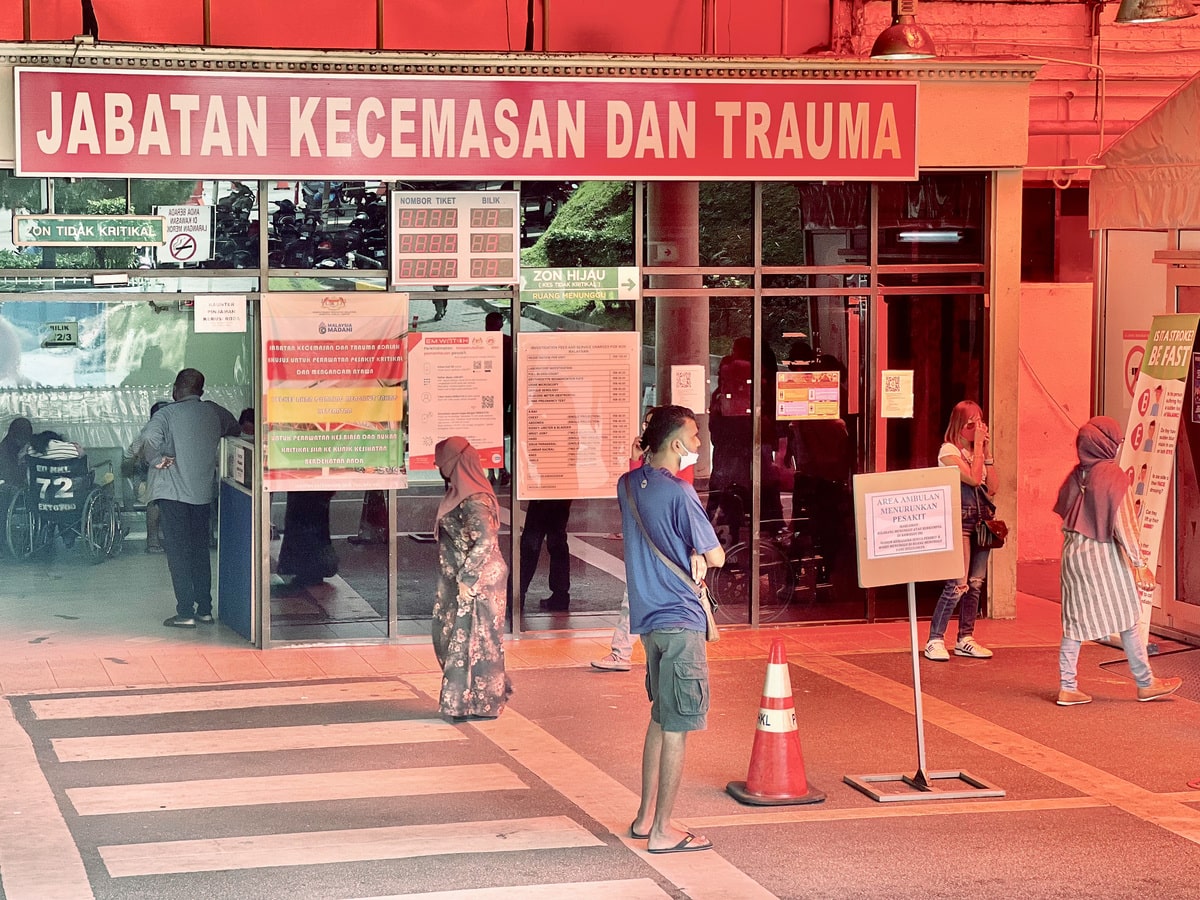KUALA LUMPUR, August 2 – Hartal Doktor Kontrak (HDK) expects wait times in emergency departments for admissions at major public hospitals to increase by a whopping 50 to 100 per cent – possibly for nearly a year until June.
This followed the relocation of more than 4,100 trained medical officers nationwide, including the exodus of more than 80 to nearly 120 doctors out of each of these major hospitals: state hospitals in Melaka and Negeri Sembilan, as well as tertiary hospitals in Selangor like Selayang Hospital, Serdang Hospital, and Sungai Buloh Hospital.
These referral centres did not receive a single medical officer in the Ministry of Health’s (MOH) massive placement exercise of contract doctors for permanent positions, who had to report for duty last July 31.
HDK, a contract doctors’ group, said the mass relocation of doctors out of the peninsula’s central region would mean that waiting times in emergency rooms could now double from 12 hours to 24 hours for admission at Tuanku Ja’afar Hospital (HTJ) in Seremban, and from two days to four days for admission at Kuala Lumpur Hospital (HKL).
“Many essential services will be affected for sure. The lack of manpower and burnout rates are expected to skyrocket. While some heads of department and hospital directors might still continue providing all services at the expense of their subordinates’ mental and physical well being, HDK hopes such instances will remain a minority,” HDK told CodeBlue.
CodeBlue reported yesterday that Wilayah Persekutuan (WP) Kuala Lumpur and Putrajaya, excluding HKL and Tunku Azizah Hospital (HTA), took the hardest hit in the relocation exercise, with a net loss of 188 doctors.
BSM classified HKL and HTA separately from WP Kuala Lumpur and Putrajaya. HKL and HTA each gained net 32 and 28 medical officers respectively.
Despite the addition of 32 medical officers, priority is expected to be given to HKL’s medical department, which a source within the hospital previously described to CodeBlue as being in a state of decline due to its high turnover rate.
Selangor (-172), Melaka (-171), and Negeri Sembilan (-133) were also among the biggest losers, according to the MOH’s Human Resource Division’s (BSM) list of 4,149 medical officers who chose placements for permanent positions this year.
In contrast, Borneo gained a whopping net total of 1,070 doctors, making Sabah and Sarwak the primary beneficiaries of the nationwide relocation exercise of contract medical officers for permanent positions this year.
Health Minister Dr Zaliha Mustafa tweeted last Saturday – following a press conference held in Kota Bharu, Kelantan, just two days before medical officers involved in the relocations report for duty on Monday (July 31) – that vacancies in the affected hospitals will be filled latest by December.
However, HDK predicted that the repercussions of the relocations would extend until June next year.
“Even with the replacement, training is necessary in order for them (‘floating’ medical officers) to be fully functional. It can go up to three to six months before a new medical officer becomes fairly competent. And with increasing workload at resource depleted centres, expect many to also quit to go to the private sector, further worsening the situation,” HDK said.
“Floating” medical officers are doctors who just completed their housemanship.
Although an unpopular move, HDK said there is a need for services to be reduced in some facilities where staffing levels are at severely critical levels.
“The core ethics of medicine is non-maleficence: do no harm. If there could be harm to the patient due to lack of manpower, HDK agrees that patients should be turned away and advised to seek treatment elsewhere.
“The government could establish a public-private partnership (similar to Skim Madani, but more comprehensive) to reduce the workload of MOH staff without compromising the public’s access to quality health care services,” HDK said.
HDK said burnout and staff resignations are also potential risk factors that may worsen the impact on services, as well as patient care and safety.
“It’s a vicious cycle. Increased workload leads to burnout, leads to resignations, leads to increased workload, resulting in substandard health care service, and jeopardising patient and health care worker safety.”
HDK agreed that Sabah and Sarawak too deserve more doctors. However, the group attributed the current situation to years of poor planning by those in power.
“Ministers change all the time, yet there is no amenable solution to solve this issue. We need to provide more funding and scholarships to train local Sabahan/ Sarawakian doctors and specialists who can serve their regions.
“Additionally, we should offer more incentives to those from the peninsula who have made significant sacrifices to serve in Borneo,” HDK said.
“If we cannot even provide simple logistic and transfer allowances to permanent doctors who move there, then there are clearly issues in how things are being managed.”
The more-than-4,100 contract doctors involved in placements for permanent positions this year were not eligible to claim for transfers, as the relocations were mandated on the same date the permanent appointments came into effect.
If the MOH had put into effect permanent appointments before the medical, dental, and pharmacy officers reported for duty, then these government health care professionals would have been eligible for transfer allowances, since the relocations would have occurred while they were “officially” in service – as opposed to the system treating them as “new” hires in government.








